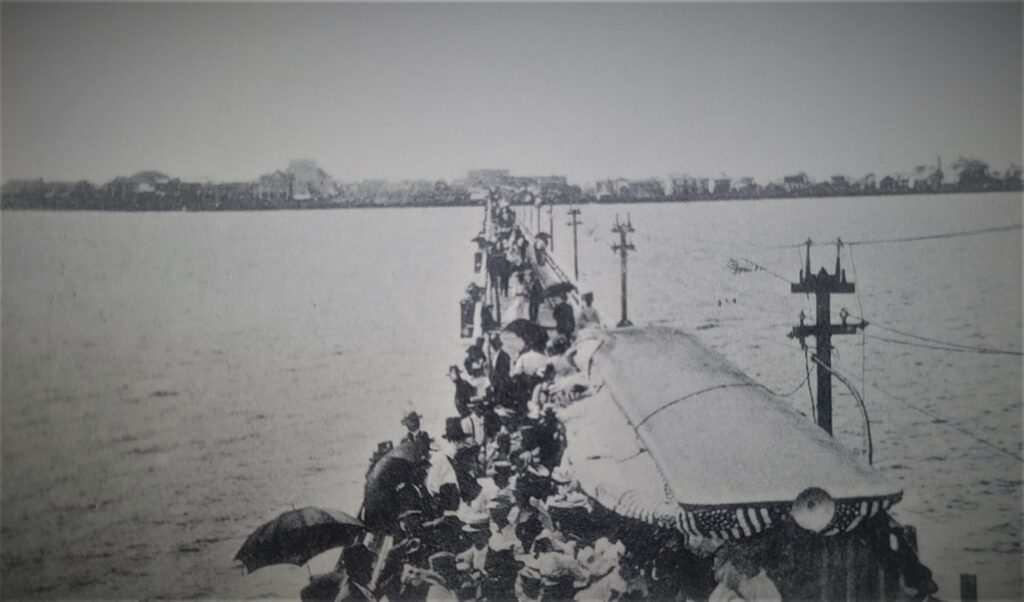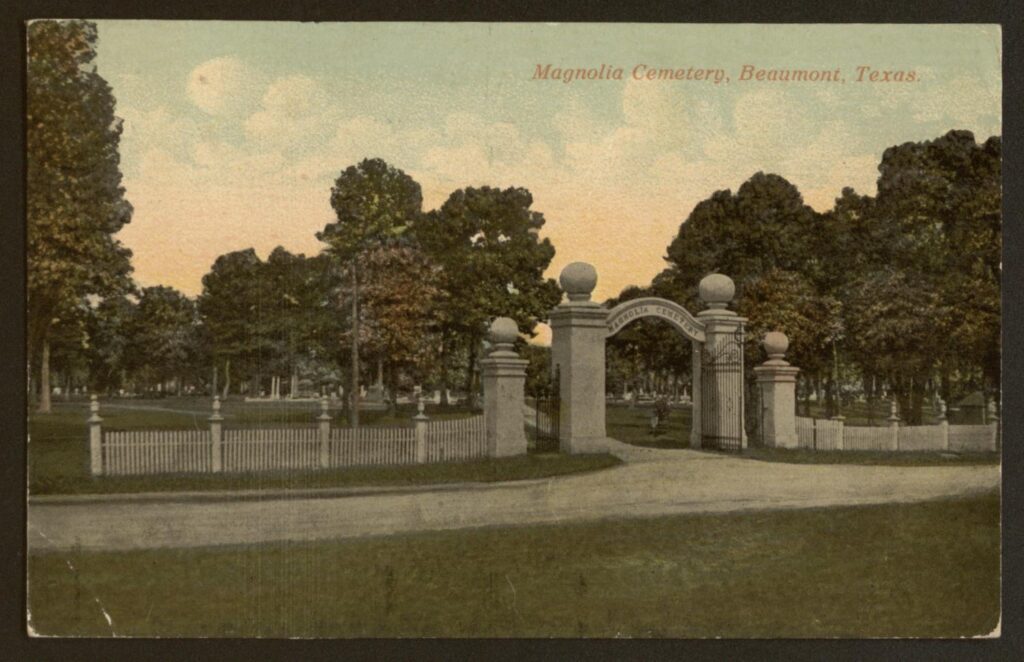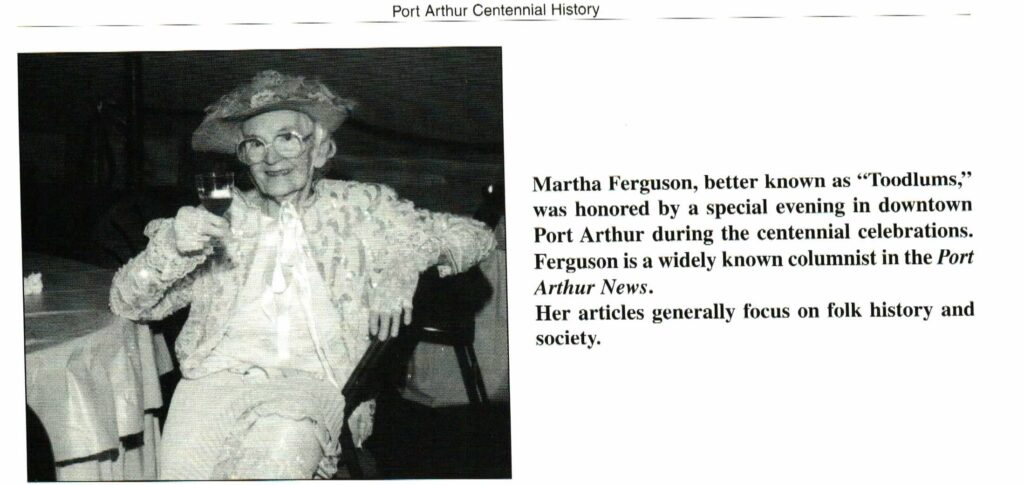
After listening to the Bayoulands podcast, I was triggered by just one word: Stringbean. Probably because I’ve been thinking of my late friend Jerry, and he was the one who introduced this Port Arthur/Pleasure Island train history to me. We will get into this supposed death trap of a vehicle in a minute, but I want to add that the safety standards in 1914 were not up-to-date with modern technology. I guess you can look at things like ski lifts in the 70s and 80s, which would be the same thing, I guess. Many people rode the ski lifts to the top of the mountain—even with children on their laps—unharnessed. “Oh, the horror!” In the end, people do what they can, by necessity, and you can’t judge them by the era you live in. But I do judge people on what they put on their toast. (I’m old and don’t care.) You have to see the whole history, not your 2023 observations. But it’s wild all the same.
Looking at the photo, and knowing the history of the trolley, which charged five cents for a ride across the waterway, it seems there were a lot of people who didn’t pay five cents and walked across the small walkway beside the tracks. I’m sure some safety person would be triggered at this photo for a totally different reason than I am, but back in the 1910s, people did what they could. I’m just amazed that they could produce ice in August 1906 in Beaumont. To me, that’s Egyptian-grade history. We don’t have pyramids in Beaumont, but we do have a fire hydrant. Thanks, Disney!

The Historic Magnolia Cemetery Tour is a name we’ve been throwing out there for the past two years, but this year, we can actually promote it as a cemetery tour in a historic cemetery. Why? As of this week, the cemetery has been legally acknowledged by the Texas Historical Commission (THC) as a historic cemetery. Up the road a bit, Evergreen Cemetery has had this designation since 2001, and I know that someone is currently in the process of trying to get Pear Orchard Cemetery designated, too. How does a cemetery become a historic cemetery in the eyes of the Texas Historical Commission? To be honest, hard work and research by some determined people who get it done is usually the recipe. Legitimate research is a must, because hearsay doesn’t cut it.
Historic cemetery designations are generally a lot easier to achieve than designations for places, people, or historic events, which have their own rules and timeframes to go by. This type of research is solely for the passionate, and I don’t suggest that anyone do it unless they are ready to help. I’ve had someone email me about researching an old family name in SETX, wondering where the cemetery was. That part is easy, but they didn’t stop there—they wanted me to research their old families’ histories in the Netherlands. No. I don’t spend my time and money researching West-end Wanda’s kinfolk. No, I can’t blame this on Wanda (unless it was her cousin from Missouri emailing me), but the sentiment is there. I’ll help out, but you’re going to do the work.

Usually, in the summer months, I can’t do as much research as I would like because of work, so my goal for digitizing all the Susie Spindletop Weekly Letters will have to be extended to the winter months, along with my desire to delve into Toodlum’s Port Arthur News articles. Martha “Toodlum” Ferguson was someone I never met, but I found her articles helpful, especially when researching the Interurban. I also find her honest when bringing up Port Arthur’s history. I will add that scanning through a copy of the Port Arthur News, the Beaumont Enterprise, orthe Journal is much easier nowadays than when I started. Expensive, but easier. I spent two and a half years at the Tyrrell Historical Library on a microfiche machine, keeping them in quarters. It was like being in a casino, but with no alcohol, and hitting the jackpot a few times. (The Tyrrell was a Baptist Church before it was a library, so they may have frowned upon drinks.)
Until next time, tot de volgende keer!

You must be logged in to post a comment.